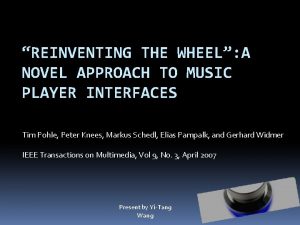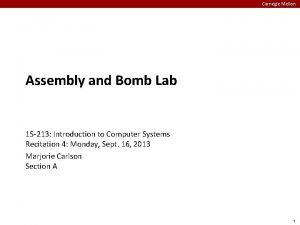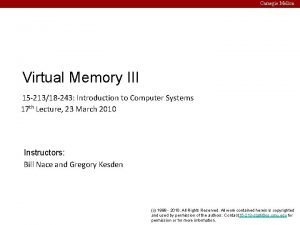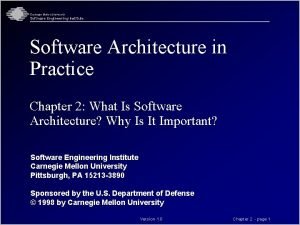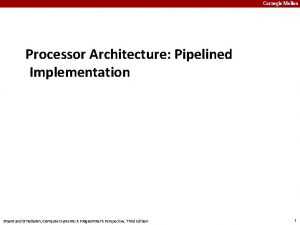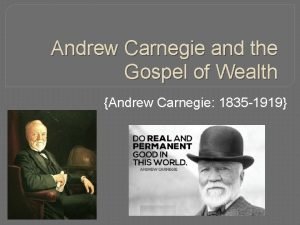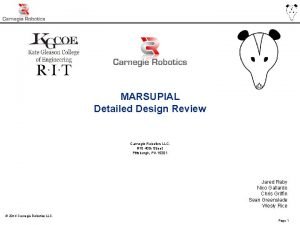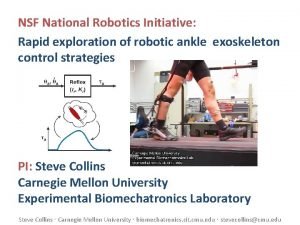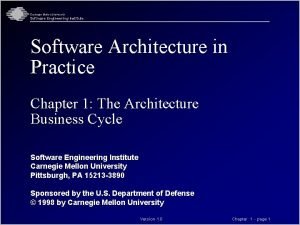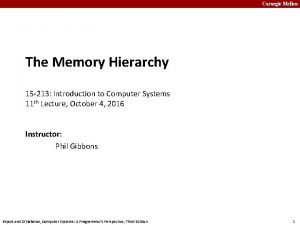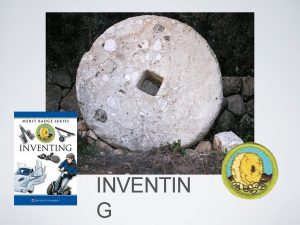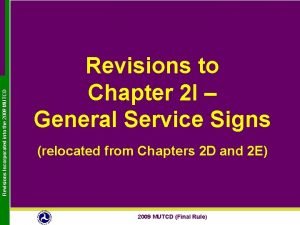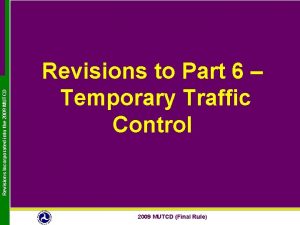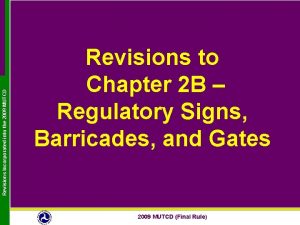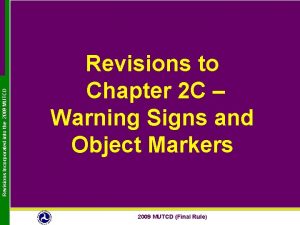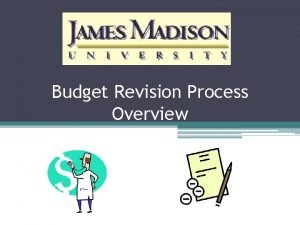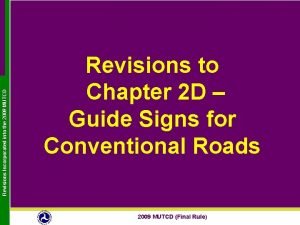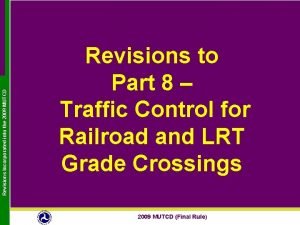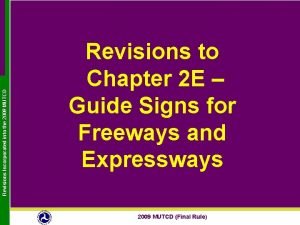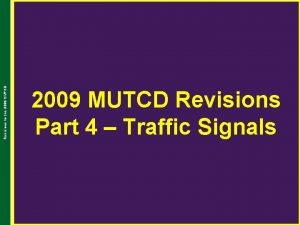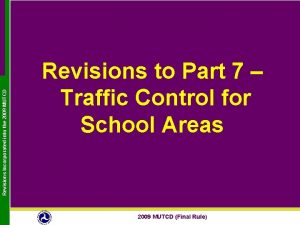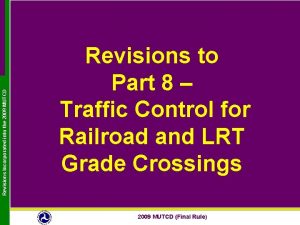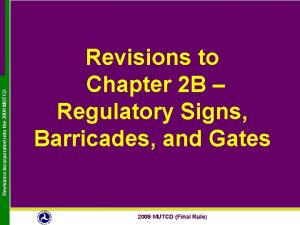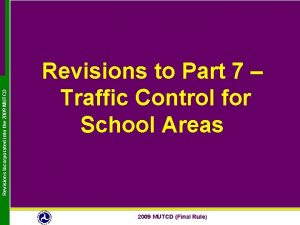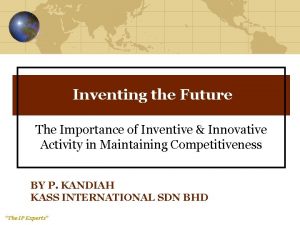Inventing the Future 2005 Revisions to the Carnegie




















- Slides: 20

Inventing the Future: 2005 Revisions to the Carnegie Classification President’s 2005 Planning Retreat August 16, 2005

Carnegie Classification of Postsecondary Institutions £ History n Devised by the Carnegie Commission on Higher Education in the 1970’s to provide a classification scheme informing its research program n Published in 1973 for use by others conducting research on higher education n Tool for simplifying the complexity of U. S. higher education

Carnegie Classification of Postsecondary Institutions £ Purpose n To identify categories of roughly comparable institutions within which meaningful comparisons can be made n Not intended to represent the full identify or fundamental character of an institution n Not intended to represent quality differences

Traditional Classification £ £ £ Doctorate-Granting Institutions n Research I & II n Doctoral I &II Comprehensive Universities & Colleges Liberal Arts Colleges Associate’s Institutions Specialized Institutions

Classification Criteria £ Level of Program £ Number of Programs £ Number of Degrees Awarded

Traditional Classification £ Doctorate n n Granting Institutions Research I - $40 million + Research II - $15. 5 to 40 million Doctoral I - 40 doctorates in 5+ disciplines Doctoral II - 10 doctorates in 3+ disciplines 20 doctorates in 1+ disciplines

2000 Revision £ Retained the basic structure that was established in 1971 n n Reduced the number of doctorate granting institutions Eliminated use of federal funding l n Rough proxy for research activity Focused on doctoral production l Volume and fields represented

2000 Revision £ £ Research II £ Doctoral/Research Extensive Doctoral II £ Doctoral/Research Intensive


2005 Revision to Classification £ Single classification scheme hampered ability of researchers and policy makers to make use of other areas of similarity £ Widely interpreted as a ranking scheme

Summary of 2005 Revisions £ Two n n Schemes Comprehensive Scheme—includes all degree -granting Title IV eligible institutions of higher education included in the federal data collection by NCES Elective Scheme—voluntary participation by institutions with strong commitments in selected areas

2005: Two Classification Schemes Comprehensive Schemes £ £ £ Traditional, Revised Undergraduate Programs Graduate Programs Overall Student Profile Undergraduate Student Profile Size and Setting of Institution Elective Schemes £ Assessment and Support of Undergraduate Education £ Service and Community Engagement

Comprehensive Scheme: Traditional Revised £ Will be based on the traditional framework but with revisions that include: n n n Multiple measures to assess research activity in doctoral institutions Improve treatment of primarily undergraduate colleges Create subcategories of 2 -year colleges

Comprehensive Scheme: Undergraduate Programs £ All institutions with undergraduate programs £ Criteria n n n Level of program (Associate’s or Bachelor’s) Program emphasis (A&S or Professional) Co-existence of graduate programs

Comprehensive Scheme: Graduate Programs £ All institutions with graduate programs £ Criteria n n Level of program (doctoral/non-doctoral) Number of doctorates awarded Comprehensiveness/Focus of programs Existence of medical degrees

Comprehensive Scheme: Student Profiles £ Enrollment Profile Student mix n n Undergraduate Graduate Professional Non-degree Undergraduate Profile £ Proportion full-time £ Achievement of firstyear students £ First-year progression vs. transfer

Comprehensive Scheme: Size and Setting £ Locale (urban, suburban, rural) £ Total enrollment £ Residential nature of institution and surrounding area

Elective Schemes Assessment & Support of Undergraduate Education £ Efforts to assess undergraduate education £ Support for assessing and improving teaching and learning Service & Community Engagement £ Commitment to service, outreach and engagement activities £ Pilot project with 14 campuses

Comparison of 2000 and 2005 £ 1971 -2000 Traditional Taxonomy £ £ £ £ 2005 Traditional Taxonomy Undergrad Programs Graduate Programs Enrollment Profile Undergraduate Profile Size and Setting Elective Schemes

Timeline £ Draft versions of new schemes and criteria beginning in June £ Phased rollout of assignments beginning mid-November
 Have you ever thought about inventing something
Have you ever thought about inventing something Re-inventing the wheel
Re-inventing the wheel Inventing and reinventing organizations
Inventing and reinventing organizations Future simple future continuous future perfect exercises
Future simple future continuous future perfect exercises Future perfect simple and continuous
Future perfect simple and continuous Carnegie mellon
Carnegie mellon Cmu vpn
Cmu vpn Modelo incrementalista
Modelo incrementalista Carnegie
Carnegie Carnegie mellon software architecture
Carnegie mellon software architecture Frax
Frax Philanthropy carnegie
Philanthropy carnegie Was andrew carnegie a hero
Was andrew carnegie a hero Carnegie robotics llc
Carnegie robotics llc Kevin thompson nsf
Kevin thompson nsf Carnegie mellon software architecture
Carnegie mellon software architecture Carnegie mellon
Carnegie mellon Carnegie mellon computational biology
Carnegie mellon computational biology Bill gates founder of microsoft
Bill gates founder of microsoft Carnegie learning
Carnegie learning Carnegie vertical integration
Carnegie vertical integration

